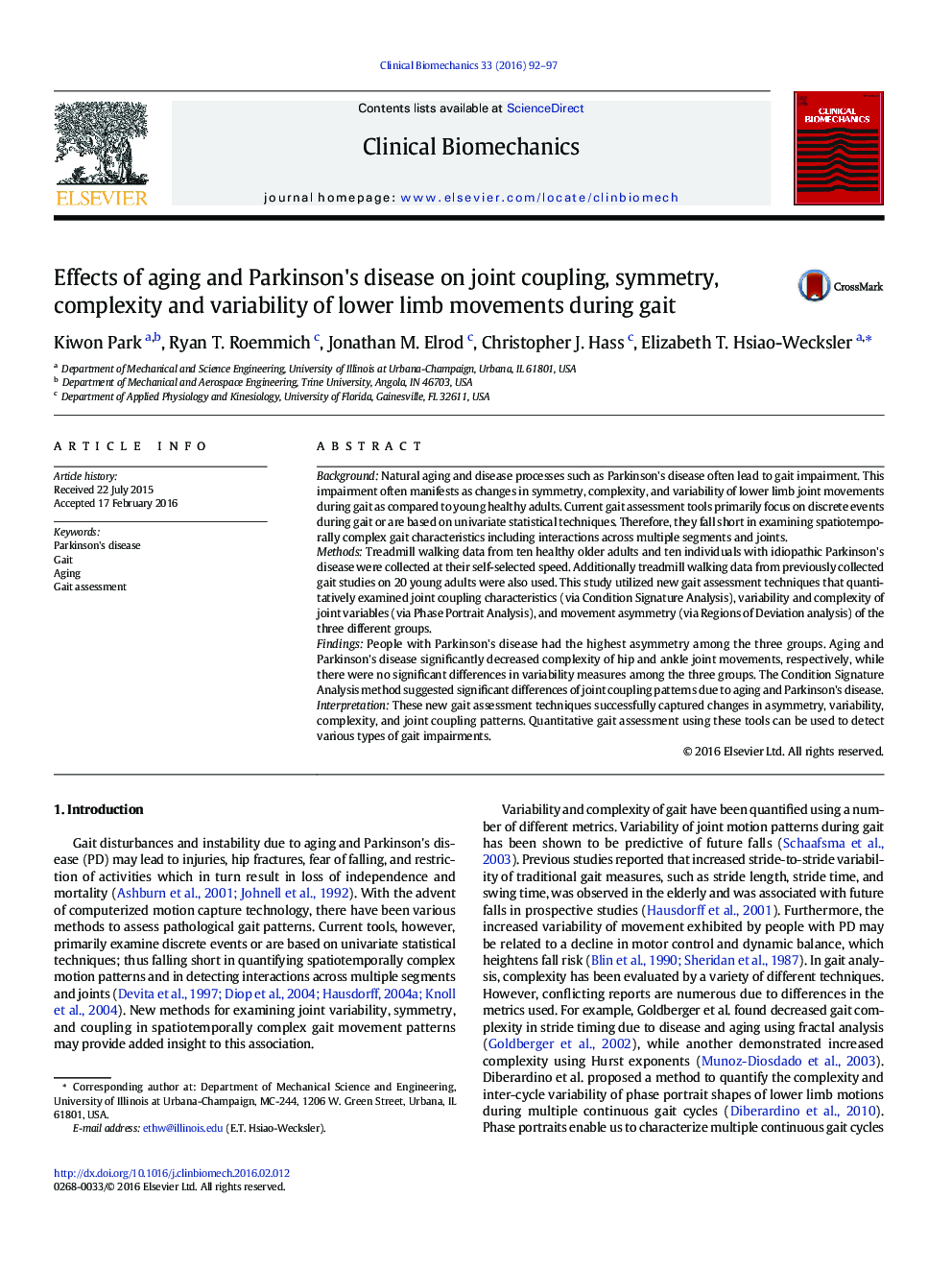| Article ID | Journal | Published Year | Pages | File Type |
|---|---|---|---|---|
| 4050138 | Clinical Biomechanics | 2016 | 6 Pages |
•We examined gait behaviors of young and old adults and Parkinson's disease patients.•We utilized new gait assessment techniques to examine joint variables during gait.•People with Parkinson's disease had greater asymmetry than the elderly.•Aging and Parkinson's disease decreased hip and ankle motion complexity, respectively.•These tools can be used to quantitatively assess various types of gait impairments.
BackgroundNatural aging and disease processes such as Parkinson's disease often lead to gait impairment. This impairment often manifests as changes in symmetry, complexity, and variability of lower limb joint movements during gait as compared to young healthy adults. Current gait assessment tools primarily focus on discrete events during gait or are based on univariate statistical techniques. Therefore, they fall short in examining spatiotemporally complex gait characteristics including interactions across multiple segments and joints.MethodsTreadmill walking data from ten healthy older adults and ten individuals with idiopathic Parkinson's disease were collected at their self-selected speed. Additionally treadmill walking data from previously collected gait studies on 20 young adults were also used. This study utilized new gait assessment techniques that quantitatively examined joint coupling characteristics (via Condition Signature Analysis), variability and complexity of joint variables (via Phase Portrait Analysis), and movement asymmetry (via Regions of Deviation analysis) of the three different groups.FindingsPeople with Parkinson's disease had the highest asymmetry among the three groups. Aging and Parkinson's disease significantly decreased complexity of hip and ankle joint movements, respectively, while there were no significant differences in variability measures among the three groups. The Condition Signature Analysis method suggested significant differences of joint coupling patterns due to aging and Parkinson's disease.InterpretationThese new gait assessment techniques successfully captured changes in asymmetry, variability, complexity, and joint coupling patterns. Quantitative gait assessment using these tools can be used to detect various types of gait impairments.
